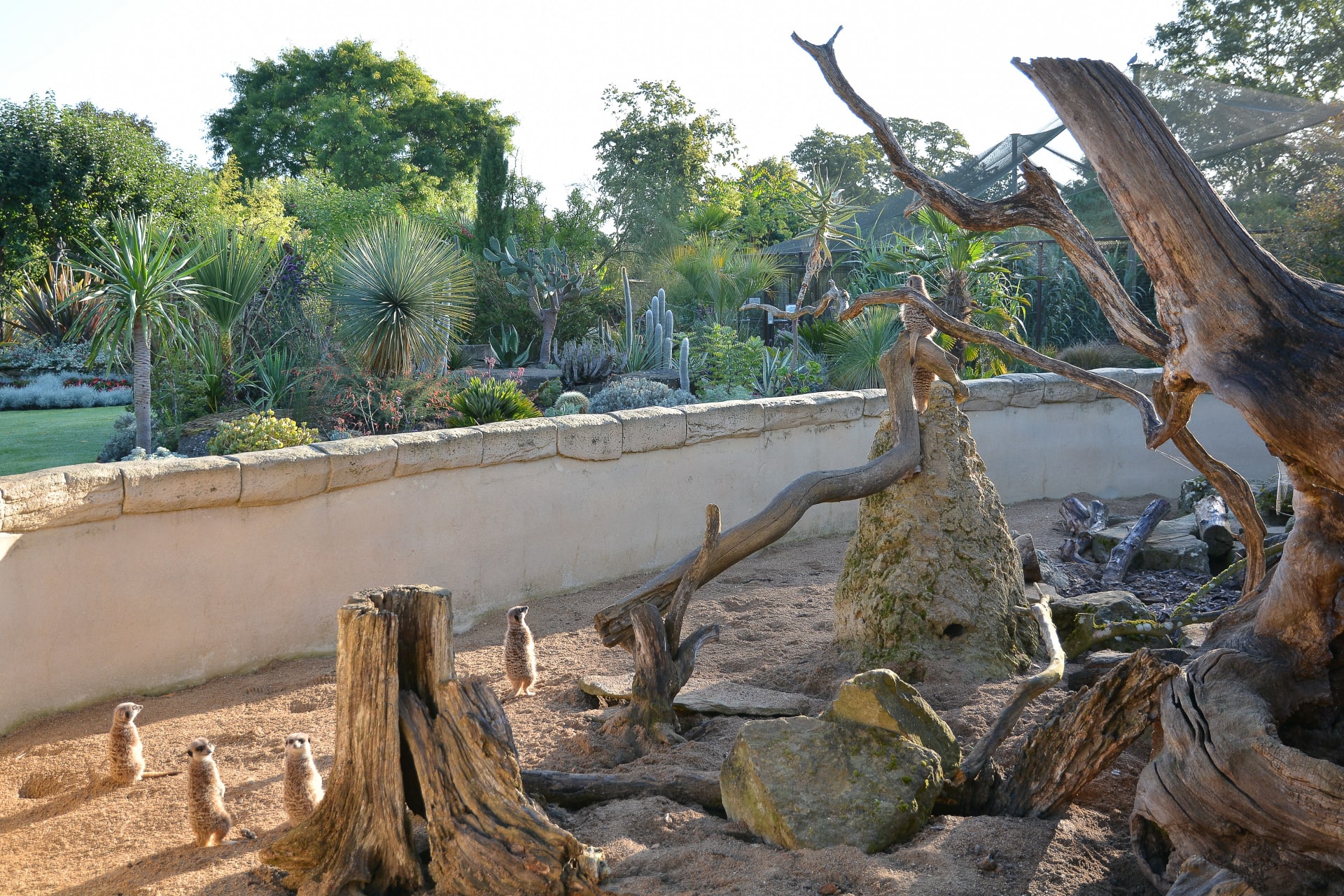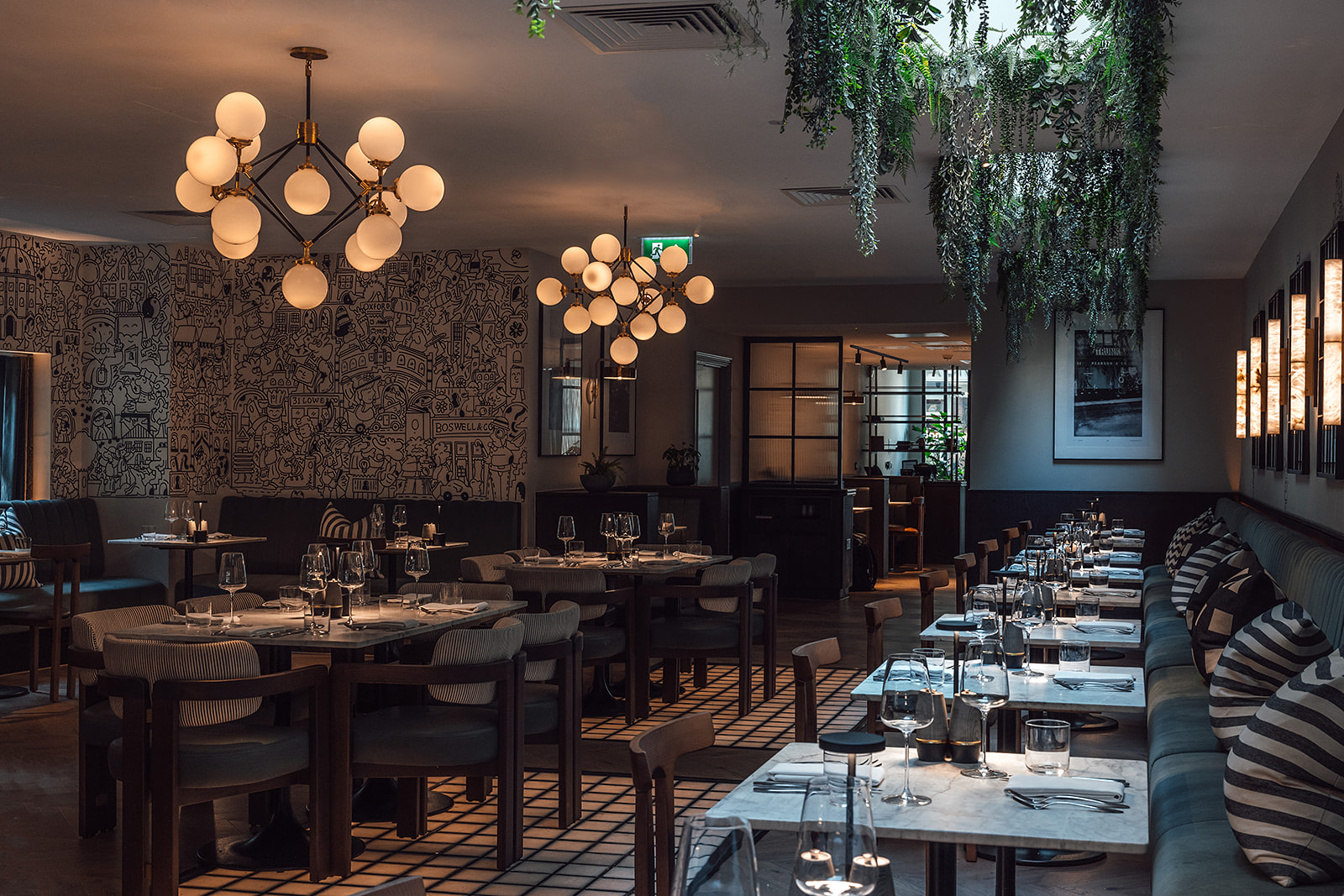There is a unique garden which is home to a vast array of unusual plants from around the world, located on the A361, just outside Burford in West Oxfordshire. I am, of course, talking about the 160 acres of land scaped park land and gardens that make up the Cotswold Wildlife Park and Gardens. I have visited the Park several times to seek out and admire the diverse range of some 250 different species of mammals, birds, reptiles, and invertebrates from around the world, but recently was invited to walk around the grounds with Section Head of Gardens, Jan Lambourn. Focusing on just the plants, not paying much attention to the wild life within the areas, was a fascinating experience. Certainly, the team of nine gardeners and four grounds-staff have many challenges to face each year in caring for the well-kept grounds, not least the recent Covid pandemic coupled with the cold, wet late Spring of 2021.
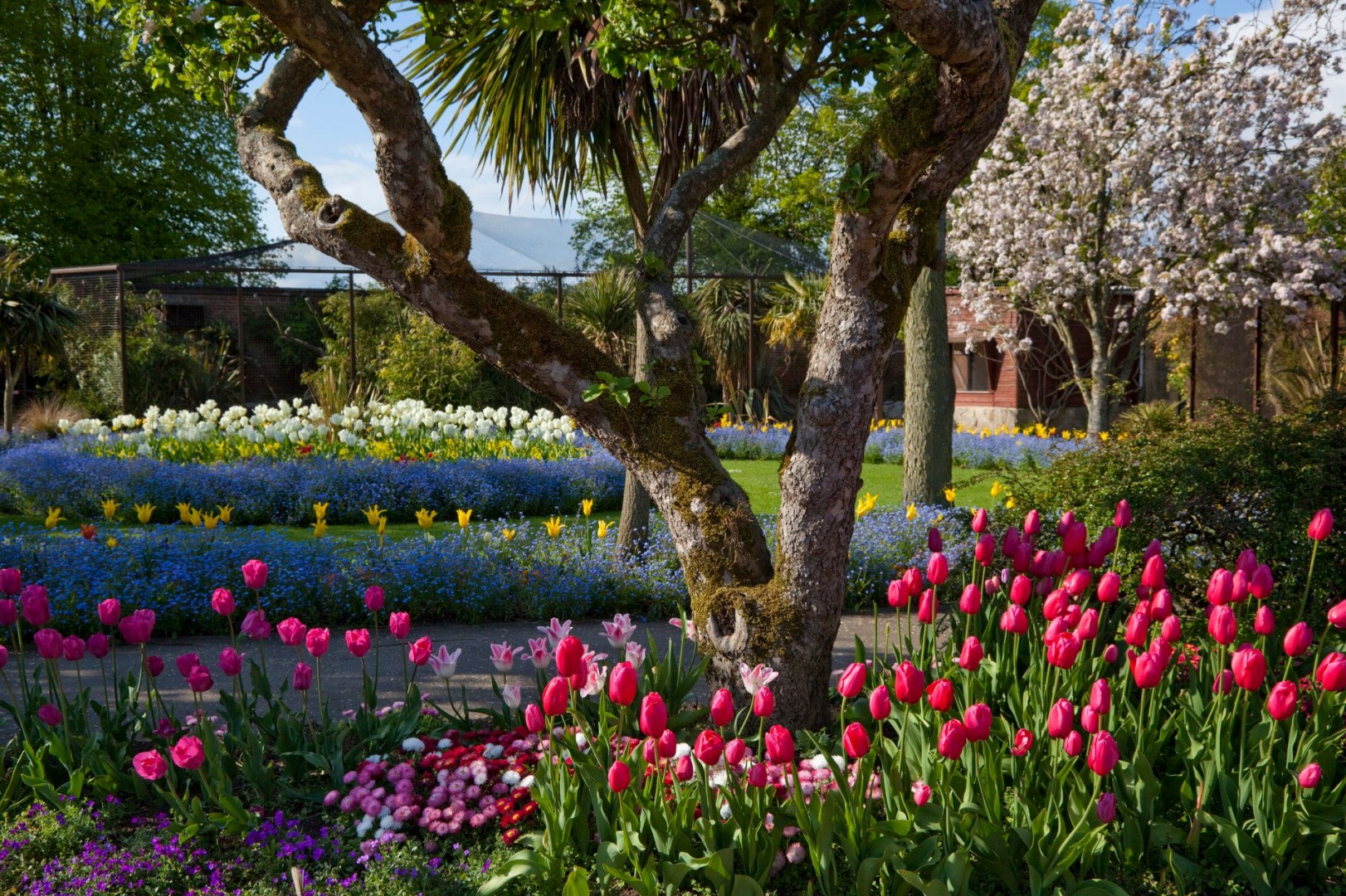 The Cotswold Wildlife Park was established in 1970 by the late John Heyworth, father of the present owner Reggie Heyworth. John Heyworth needed to raise money to maintain the house and estate his grandfather Colonel Heyworth Savage had bought in 1923 and which he inherited in 1948. Bradwell Grove Manor House, designed by William Atkinson and built in 1804, sits at the heart of the estate. However, from 1949 to 1969, the Manor had been let and was left in disrepair. John Heyworth had a vision to open a wild life par k where visitors could park their cars and walk, getting as close as safely possible to the wildlife whilst enjoying the grounds as they did so. His son Reggie took over as Managing Director and is very much hands-on with the day-to-day running of the Park.
The Cotswold Wildlife Park was established in 1970 by the late John Heyworth, father of the present owner Reggie Heyworth. John Heyworth needed to raise money to maintain the house and estate his grandfather Colonel Heyworth Savage had bought in 1923 and which he inherited in 1948. Bradwell Grove Manor House, designed by William Atkinson and built in 1804, sits at the heart of the estate. However, from 1949 to 1969, the Manor had been let and was left in disrepair. John Heyworth had a vision to open a wild life par k where visitors could park their cars and walk, getting as close as safely possible to the wildlife whilst enjoying the grounds as they did so. His son Reggie took over as Managing Director and is very much hands-on with the day-to-day running of the Park.
Planning the planting schemes takes considerable thought and imagination; they must provide an immersive experience for visitors who want to be able to see the animals and birds, whilst providing a sense of security to the enclosures’ occupants, sheltering them from cold weather in winter and heat in summer. There is also the challenging soil, mainly clay over a limestone bedrock, which over the years has been mulched to gradually improve its structure. Combining a plethora of unusual and rare plants, species are selected to add impact and texture to the schemes. Both flowers and foliage in tones of deep red, plum, orange, and dark yellow bring an ambience to the gardens. Favourite tender plants include cannas, dahlias, gingers, and salvias. Bamboos, which are an important animal food source, are threaded throughout the Park with over fifty species of varying height, colour, habit, and vigour.
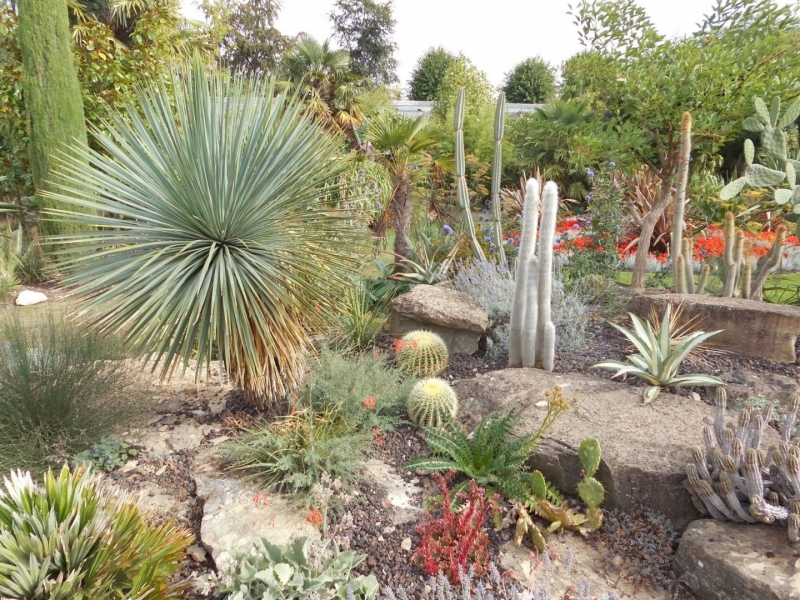 There are, however, various micro-climates within the grounds that enable tropical plants to spend the warmer months outdoors, being taken back under cover during the winter months. Former Head Gardener, Tim Miles, who worked at the Cotswold Wildlife Park for twenty-two years, originated from Cornwall and brought with him a knowledge of semi-tropical plants that grow happily in the West Country. Many of these plants have been successfully incorporated into the planting schemes within the Park.
There are, however, various micro-climates within the grounds that enable tropical plants to spend the warmer months outdoors, being taken back under cover during the winter months. Former Head Gardener, Tim Miles, who worked at the Cotswold Wildlife Park for twenty-two years, originated from Cornwall and brought with him a knowledge of semi-tropical plants that grow happily in the West Country. Many of these plants have been successfully incorporated into the planting schemes within the Park.
The Walled Garden, home to the Manor’s kitchen garden until World War II, provides a trail through a mini jungle every summer as well as an arid desert with a range of cacti, agave and aeoniums, thanks to many of the plants being in pots that are then placed, plunged or planted into the narrow borders along the paths with epiphytic orchids and bromeliads fixed into branching oak ‘perches’. Many of the plants used within this area are normally grown as indoor house plants but add to the tropical effect as you walk towards the Tropical House 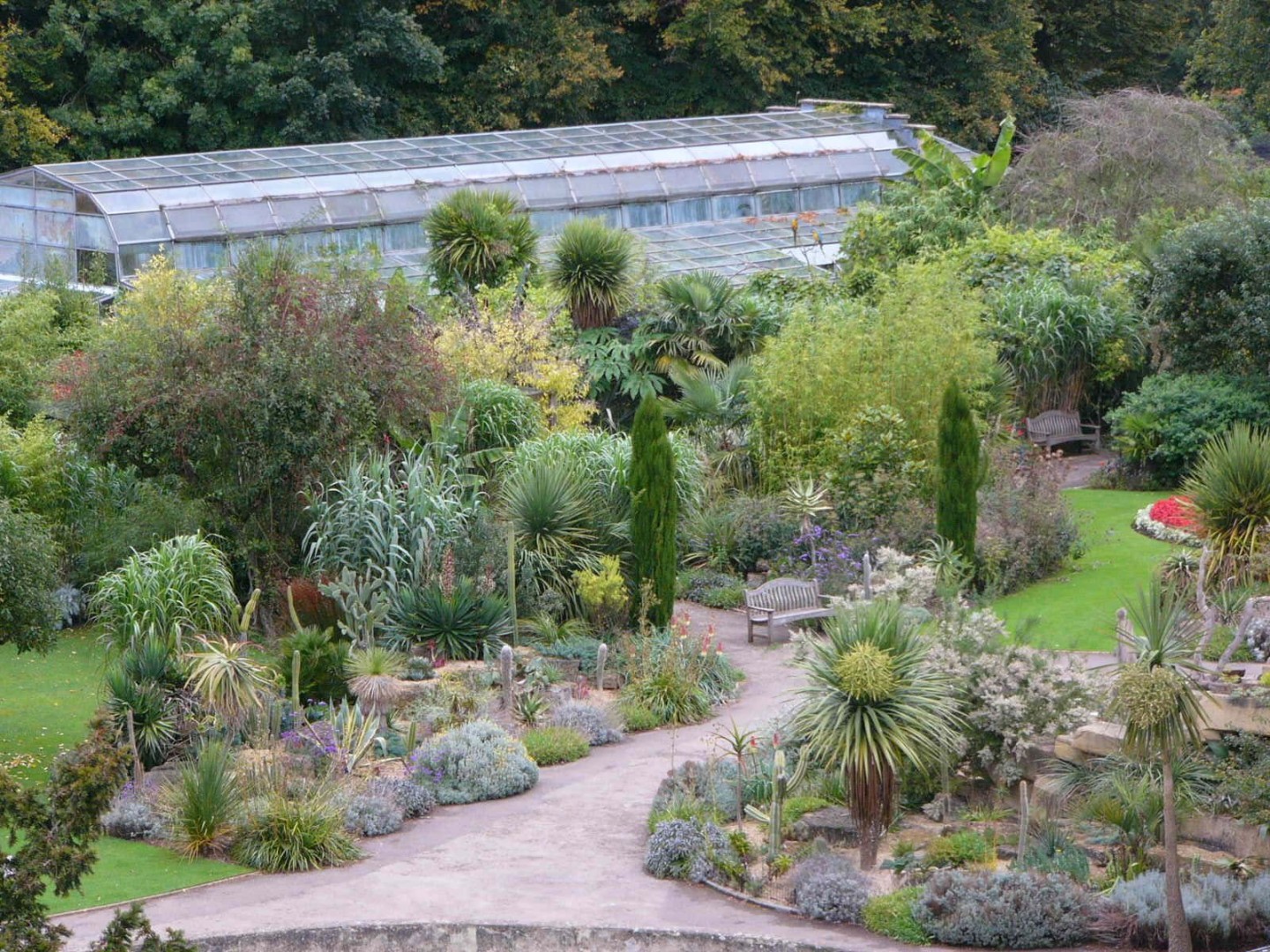 entrance. The Tropical House, replacing the Walled Garden’s original Victorian peach and vine house, was constructed in 1981. Not only is it home to sloths, fruit bats, potoroos, and tropical birds, but it is planted with an exotic collection of jungle plants which thrive in the constant 18oC semi-humid atmosphere. Managing the Tropical House is a question of balance: providing an immersive “jungle-like” experience for the visitors and a refuge for animals and birds. (Please note that depending on current restrictions, the Tropical House may still be closed as it was when I visited).
entrance. The Tropical House, replacing the Walled Garden’s original Victorian peach and vine house, was constructed in 1981. Not only is it home to sloths, fruit bats, potoroos, and tropical birds, but it is planted with an exotic collection of jungle plants which thrive in the constant 18oC semi-humid atmosphere. Managing the Tropical House is a question of balance: providing an immersive “jungle-like” experience for the visitors and a refuge for animals and birds. (Please note that depending on current restrictions, the Tropical House may still be closed as it was when I visited).
Although the Madagascar walk-through enclosure was closed due to Covid regulations at the time of my visit, once it is re-opened, take a moment to enjoy the magnificence of the new bog garden with its range of North American carnivorous plants, planted in May 2021. All the plants evoke the feel of a jungle pool area with the sound of water softly trickling in from the logs which have been carefully sited. Planning the planting of the lemurs’ Madagascar exhibit was a challenge as the original cherry trees around which the enclosure was constructed quickly died as the lemurs persistently broke and ate the branches. Exotic plants such as monkey puzzle trees and Chinese rice paper plants (Tetrapanax papyrifer) fared better. Other plants include Eucalyuptus globulus and Leycesteria Formosa which grow successfully.
For anyone who has a love of ancient trees, the grounds have many species that predate the Wildlife Park. Indeed, there is an English Oak outside the main restaurant that dates back some 600 years. An off-spring taken from its acorns is growing in another part of the gardens. Planted in the 19th century, alongside the former Old Drive, is a large western red cedar (Thuja Plicata). On the Restaurant Lawn, your attention is drawn to a 150 feet Wellingtonia that is over 160 years old, which can be seen for miles around.
As you head towards the White Rhino paddock on the south-eastern corner you will see an area entitled ‘Little Africa’ with its collection of smaller animals from the African continent. Prairie planting has been used here with a mix of various grasses inter-planted with Dierama, purple fennel, Kniphofia and Rudbeckia deamii, to name but a few. These beds are particularly spectacular in the late summer to early autumn.
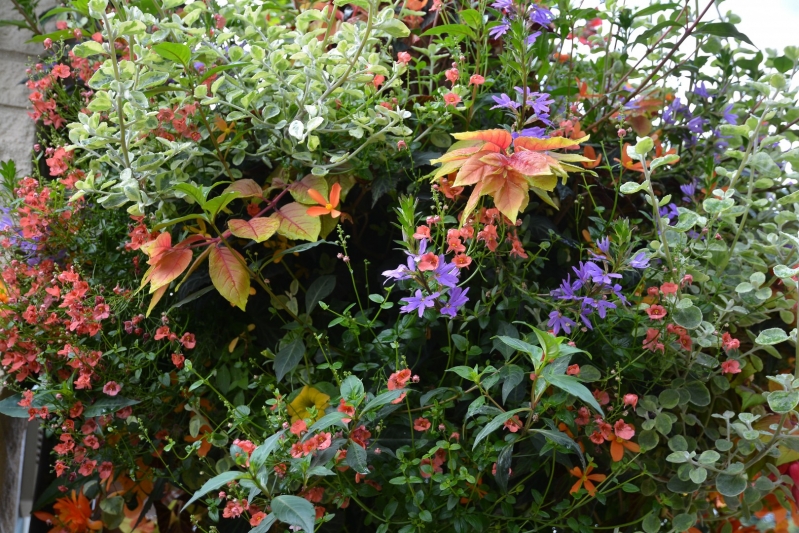 Several thousand spring bulbs provide a stunning display in the Walled Garden each year. Adjacent to the train track, where the Old Drive was previously located, snowdrops, fritillaries, narcissus, and bluebells have been naturalised. These give way to a wildflower meadow amongst which you will see Pyramidal Orchids. More traditional English country garden borders can be found to the south side of the Manor House. The paved South Terrace, installed in 1989, is planted in shades of soft greys, blues, and mauves. The Balustrade Borders and Pond is home to an unusual white Wisteria floribunda ‘Longissima Alba’; the borders beyond are of generous proportions and include a selection of shrubs, roses, perennials, bedding plants and bulbs.
Several thousand spring bulbs provide a stunning display in the Walled Garden each year. Adjacent to the train track, where the Old Drive was previously located, snowdrops, fritillaries, narcissus, and bluebells have been naturalised. These give way to a wildflower meadow amongst which you will see Pyramidal Orchids. More traditional English country garden borders can be found to the south side of the Manor House. The paved South Terrace, installed in 1989, is planted in shades of soft greys, blues, and mauves. The Balustrade Borders and Pond is home to an unusual white Wisteria floribunda ‘Longissima Alba’; the borders beyond are of generous proportions and include a selection of shrubs, roses, perennials, bedding plants and bulbs.
All the garden waste goes to good use. Providing the keepers with suitable ‘browse’ materials such as pruning from shrubs, trees, weeds, or old plants that can be used in animal diet for enrichment and nesting material or enclosure decoration is a vital job. A daily collection of bamboo is needed for the Bamboo Lemurs and Red Pandas. To help with this, two plantations of bamboo and willow have recently been planted within the Park.
All around the Wildlife Park, whatever time of the year you visit, you will see spectacular hanging baskets, planters and tubs planted with many hundreds of plants. One of the gardening team, Lin Bate, is responsible for plant propagation and each year she takes almost 1000 cuttings from 100 varieties of plants. This is a garden designed to be enjoyed throughout the year, whatever the season or the weather; full of colour, texture, interest, and ideas.
If you have not visited the Cotswold Wildlife Park for a while or are looking for somewhere new to explore, this is one of Oxfordshire’s finest tourist attractions. Open every day of the year except for Christmas Day, the Park is accessible to wheel chair users and welcomes well-behaved dogs on leads.
To find out more and book your tickets visit www.cotswoldwildlifepark.co.uk.
COMPETITION:
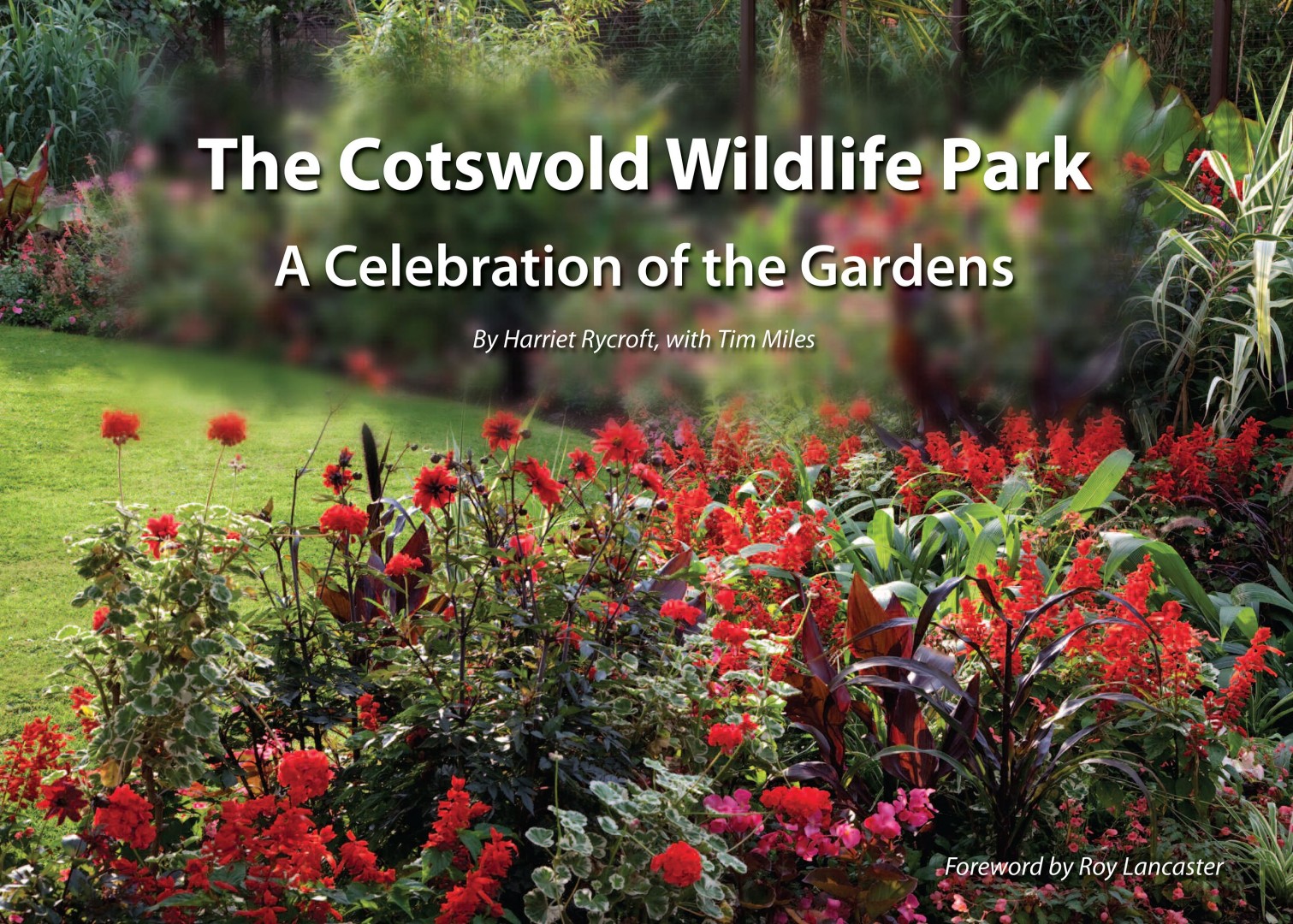
OX Magazine readers have the chance to win a pair of adult tickets plus two children’s tickets (age 3-16 years) to visit the Park at a date of the winner’s choosing, together with a copy of ‘The Cotswold Wildlife Park – A Celebration of the Gardens’ by Harriet Rycroft and Tim Miles.
visit ...
